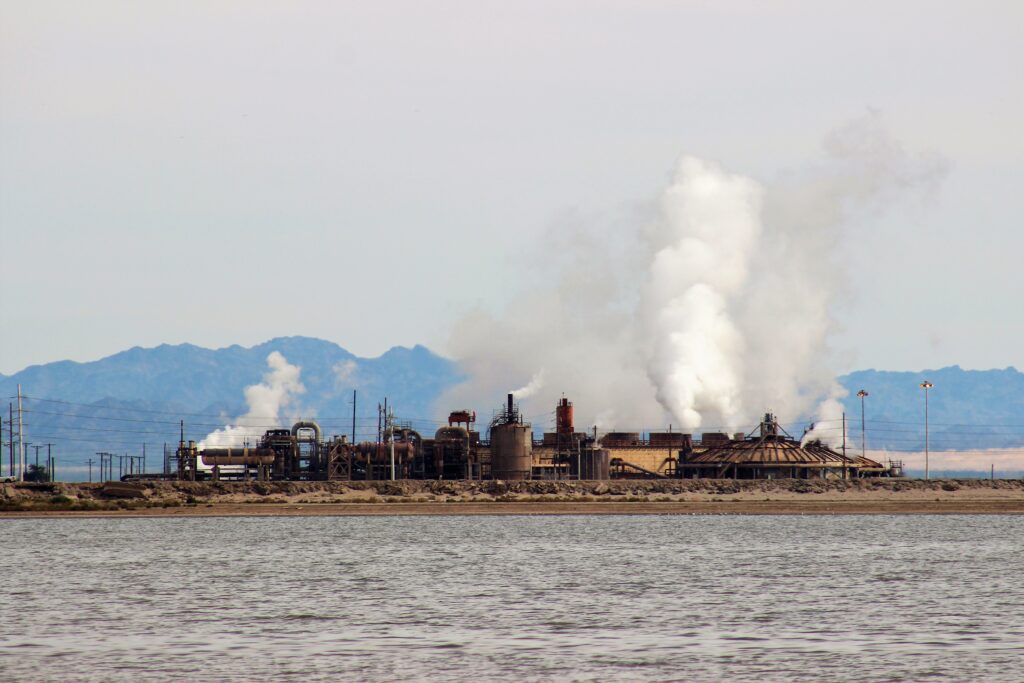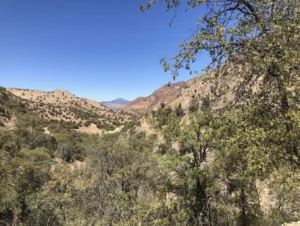“Just because it’s better than something else, doesn’t mean that it’s good for us.”
Those words, spoken by an environmental justice organizer about the promises of lithium extraction in Imperial Valley, have stuck with me. As the lithium rush careens full steam ahead, all eyes have turned to Southern California, where companies hope to extract lithium dissolved in geothermal brine deep below the south shore of the Salton Sea.

Three companies want to use direct lithium extraction (DLE) to remove lithium from brine in conjunction with new and existing geothermal power plants. DLE would use proprietary chemical and physical processes that have never before been used at commercial scale. They promise that compared to other types of lithium mining–open pit mining of hardrock deposits in Australia, or large-scale brine evaporation ponds in South America–DLE in Imperial Valley will be environmentally friendly. However, when frontline communities already living with the consequences of poor air quality in the region have asked questions about the impacts of lithium extraction to the environment and their health, answers have been elusive. At one Lithium Valley Commission meeting, concerned residents were dismissively told to read an environmental impact report thousands of pages long and full of technical jargon. How are communities who have faced decades of disinvestment and environmental injustice at the hands of extractive industries supposed to trust a nascent industry without transparency and basic information?
To help fill this gap, I worked with Imperial Valley-based Comite Civico del Valle to publish a new report: Environmental Justice in California’s Lithium Valley: Understanding the potential impacts of direct lithium extraction from geothermal brine. The goal of the report is to educate frontline communities and the public about the environmental impacts of lithium extraction in Imperial Valley.
We released the report on November 2nd, at the 12th annual Environmental Health Leadership Summit in El Centro. Three hundred participants, from grassroots EJ communities, state agencies and beyond, came together to share info and build power for the environmental justice movement in Imperial Valley, with lithium top of mind. I spoke on a panel discussion about the upcoming Programmatic Environmental Impact Report (PEIR) for the lithium industry in Imperial Valley. The PEIR will disclose and analyze the cumulative environmental impacts of lithium extraction and related industries, as well as recommend mitigation measures. A public comment period to inform the scope of the analysis is expected to open soon, and we hope the report will serve as a resource for communities who would like to comment with their concerns.
We identify five areas of potential impacts to consider:
- AIR QUALITY: Construction and operation of lithium and geothermal facilities in Imperial Valley may impact already degraded air quality through emissions of particulate matter, greenhouse gases, and hydrogen chloride.
- FRESHWATER CONSUMPTION: Lithium extraction projects will consume Colorado River water for cooling and processing. If the lithium industry expands to its planned capacity, it will exceed the freshwater currently allocated by the Imperial Irrigation District for non-agricultural use.
- SALTON SEA DEGRADATION: The Salton Sea is rapidly shrinking, exposing harmful dust contaminated by pesticides and fertilizers. If water is diverted from agriculture to lithium production, it may speed up the shrinking of the Sea, exacerbating the air quality issue and compromising restoration efforts.
- HAZARDOUS WASTE AND MATERIALS: The direct lithium extraction process will produce hazardous byproducts harmful to human health, such as arsenic, lead, and cadmium, that must be safely disposed of.
- SEISMIC ACTIVITY: While lithium extraction itself is unlikely to have an impact on earthquake risk in this seismically active area, further geothermal development might.
These potential impacts may prove to be less harmful than hardrock or evaporation mining. However, adverse impacts should still be avoided and mitigated. To promote environmental justice, communities should be aware of these potential impacts and be able to fully participate in the environmental review process. For far too long, the Salton Sea has been written off as an unsolvable disaster, a sacrifice zone. I believe that Imperial Valley has a tremendous opportunity to avoid the mistakes of the fossil fuel era, and to pursue DLE with due diligence, responsibly heeding the concerns of the community, and preventing further environmental harm.


